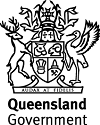Published Tuesday, 19 December, 2006 at 11:13 AM

Minister for Natural Resources and Water and Minister Assisting the Premier in North Queensland
The Honourable Craig Wallace
Honey locust: not as sweet as it sounds
Residents in South West Queensland are being called on to help the Queensland Government and Greening Australia eradicate the last few honey locust trees from the region.
Minister for Natural Resources Craig Wallace said the department’s land protection officers would conduct surveys over the next few months to identify the location of the destructive class 1 weed and talk with residents about the best methods of removal.
“Honey locust trees are extremely tough. They survive drought, have no established pests and will take over agricultural and natural environments if not controlled,” Mr Wallace said.
“We know there are honey locust trees in gardens around Toowoomba, Stanthorpe, Clifton, Millmerran and Wallangarra.”
Honey locust trees are known for their large crucifix thorns, but many ‘thornless’ cultivars, sold under names such as Imperial, Skyline, Sunburst, Shademaster, Trudeshade, Limegold and a range of other aliases, populate gardens around South West Queensland.
“The so-called ‘thornless’ ornamentals can produce crucifix-shaped thorns up to 15cm long as they age or thorny shoots when the roots are damaged,” Mr Wallace said.
“Unfortunately the trees have frequently flowered and spread before people realise the monster they can turn into.”
Mr Wallace said Greening Australia had offered to provide free replacement native trees to residents in the Eastern Downs who removed honey locust trees from their properties.
“Australian native trees are a wonderful addition to the garden,” Greening Australia Environmental Services Coordinator Phil Lister said.
“We provide a service that matches trees to the local area so they thrive and are not a threat to the natural environment as weeds like honey locust are,” he said.
NRW land protection officer Craig Hunter said all honey locust (Gleditsia spp.), including cultivars and varieties, were declared Class 1 weeds under the Queensland Land Protection (Pest and Stock Route Management) Act 2002.
“This means landholders are legally required to destroy honey locust trees on their properties and the movement or supply of live plants or reproductive materials can result in fines of up to $60 000,” he said.
Mr Hunter encouraged gardeners to be wary when buying plants interstate or over the internet as the sale of honey locust is not restricted in all states.
Honey locust trees are deciduous and can reach 20 to 30 metres in height. From spring to autumn they bear prolific bi-pinnately arranged leaves. Each leaf is 10 to 25 centimetres long with about 12 opposite paired leaflets.
Between October and November the trees produce hanging clusters of small pale yellow or green flowers that in some cultivars will develop into 20-30cm long brown bean pods that remain on the tree throughout winter.
More information on honey locust trees and the tree replacement program can be collected from your local Department of Natural Resources and Water office or by contacting Greening Australia.
High resolution photographs of honey locust trees available on request.
Media contact: South West Region communications officer Chris Leslight on 4688 1412 or 0417 071 772.
Minister’s office: Paul Childs, Craig Wallace’s office, on 0407 692 654.

